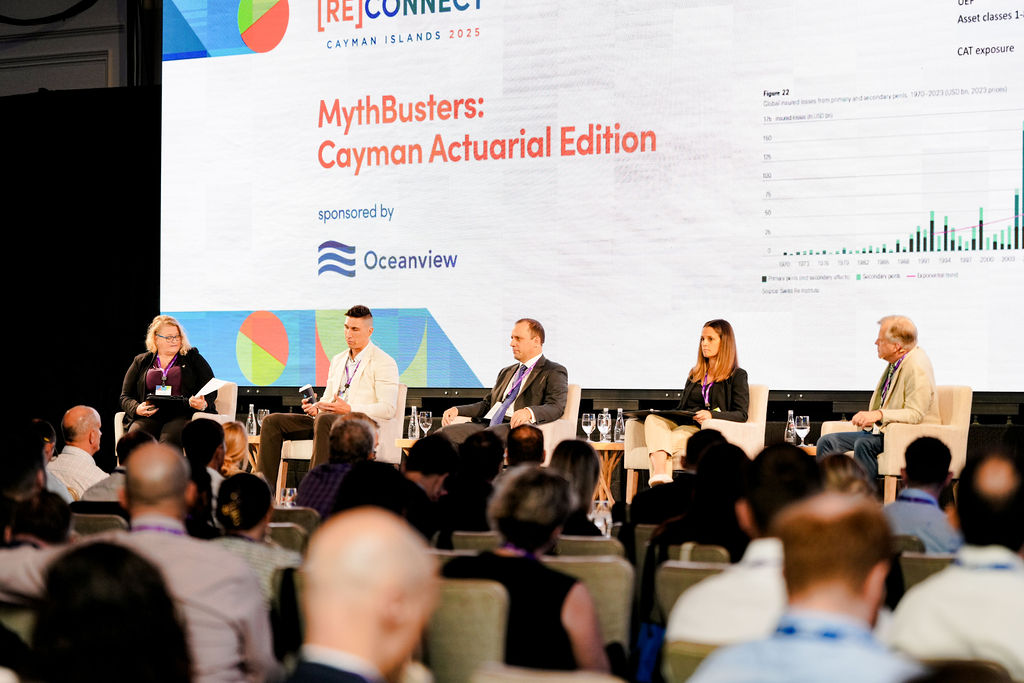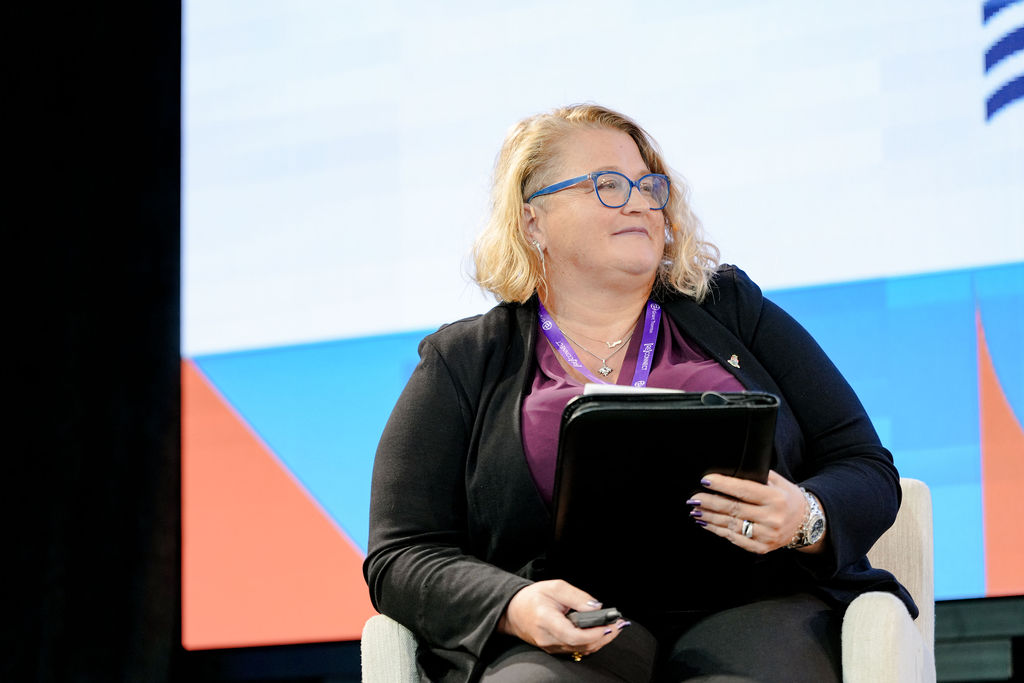
The annual reinsurance conference ReConnect on 11 April tackled a number of misconceptions about the sector in the Cayman Islands and the regulatory regime for offshore reinsurance more generally. Panellists in a session titled ‘MythBusters’ focused on the misperceptions and, quite possibly, deliberate misrepresentations made by critics in competing offshore jurisdictions, during the past 12 months, in response to the rising interest in Cayman as a reinsurance centre.
Jim Belardi, CEO of Iowa-based life insurer Athene, earlier this year claimed Cayman’s regulatory framework was less robust. Less defined capital requirements and greater flexibility all led to “unhealthy competition” and put the insurance system at risk, he said during the company’s 4th quarter results call in February, calling on the US National Association of Insurance Commissioners (NAIC) to clamp down on Cayman’s “unabated” growth.
The statement was rejected at the time by Cayman’s financial regulator, the Cayman Islands Monetary Authority (CIMA), which noted among other things that “reinsurers are held to rigorous standards, and no transaction can proceed without a written statement of no objection from the relevant onshore regulators.”
As such, the capital requirements for reinsurers operating in the Cayman Islands are in line with international standards set by the International Association of Insurance Supervisors and designed to ensure long-term solvency and protect policyholders.
In addition, Cayman’s framework offered flexibility and fostered innovation, particularly in life reinsurance, which often leads to more efficient risk management solutions, without compromising the strength or reliability of regulatory oversight, CIMA added.
The ReConnect panel went further by explaining local capital requirements, regulatory measures ensuring consumer protection, international regulatory cooperation, as well as the level of transparency for stakeholders and regulators.
Myth #1: Cayman reinsurers hold only a fraction of the capital compared to other jurisdictions
Because Cayman’s regulatory regime follows a principles-based approach, rather than prescriptive rules, a common misapprehension surrounds the financial robustness of Cayman’s reinsurers. Critics often assume that offshore reinsurers operate with thinner capital buffers than their US or European counterparts.
Jeremy Trader, chief actuary at Knighthead Annuity & Life Assurance, dispelled this notion by providing a comprehensive breakdown of Cayman’s capital framework.
Trader outlined the multiple layers of capital requirements, starting with the minimum capital requirement (MCR) that forms the baseline needed to obtain a license. Next is the prescribed capital requirement (PCR), which is publicly disclosed and can be calculated via a standard formula or an internal capital model (ICM) subject to rigorous regulatory approval. And finally, insurers hold additional capital at an operating target level, customised to their business model and risk profile.

Trader emphasised that when Cayman reinsurers use sophisticated internal models they are calibrated to a 99.5% confidence level – equivalent to a 1-in-200-year loss event. This is in fact more conservative than typical U.S. statutory requirements and equivalent to those in other respected jurisdictions.
Richard Strommer, chief actuary at Greenlight Re, in turn, explained the standard formula employed by CIMA, which is a factor-based approach that applies different charges to net premiums, gross premiums, gross reserves, catastrophe exposure and asset classes.
He pointed out that Cayman’s framework is responsive to market trends, particularly catastrophic events like the California wildfires, where charges will go up as the losses increase.
In addition, panellists outlined how the CIMA has implemented a robust supervisory framework with clear guidance and oversight from licensing to post-implementation monitoring.
Myth #2: Cayman reinsurers are less safe than onshore counterparts
A second myth suggests that offshore reinsurers, including those in Cayman, may pose greater risks to U.S. policyholders due to jurisdictional or regulatory differences.
Rachel Funk of Aureum Re pointed to the NAIC’s credit for reinsurance models, which explicitly account for cross-border risk management.
Cayman reinsurers are currently classified as “unauthorised” under U.S. standards, which means there are enhanced safeguards in place to ensure policyholder protection.
These include the requirement to hold 100% of U.S. statutory reserves in U.S.-based trust accounts, unfettered access to those assets by the ceding insurer, which reduces counterparty risk, and compliance with co-insurance agreements governed by NAIC model laws.
Funk said, “The question is really whether Cayman reinsurers can fund their US obligations, especially under times of stress.
“I don’t think the US regulator would give credit for reinsurance to ceding companies if they thought the funding of the obligations to those policyholders were at risk.”
In fact, the system is designed precisely to ensure strong funding and enforceability, regardless of the reinsurer’s domicile.
The panel also highlighted CIMA’s extensive regulatory cooperation with 71 Memoranda of Understanding (MOUs) with regulators worldwide.
Myth #3: Cayman lacks transparency in actuarial and regulatory reporting
Because Cayman’s framework is principles-based and less prescriptive than in some jurisdictions, it is sometimes claimed that this approach could be overly flexible and lack transparency.
Lesley Thompson, the panel moderator and managing director at WTW, said it is a misconception that Cayman’s flexibility means it is loosely regulated. An essential part of the principles-based approach that enables and underpins the flexibility is the regular communication and dialogue with the regulator CIMA, she added.
In response to claims that offshore jurisdictions like Cayman offer less visibility into financial or actuarial data, the panel went through the detailed regulatory requirements Cayman imposes on its reinsurers.
Actuarial reporting is guided by CIMA’s Statements of Guidance and includes detailed actuarial reports that follow US GAAP and statutory standards, cash flow testing for asset-intensive portfolios and required disclosures on reserve adequacy and financial strength.
Bill Sayre, principal and consultant at Milliman, noted the Cayman approach employs many familiar frameworks. “On the reserve side, we see predominantly US GAAP, statutory, or modified statutory approaches. On the capital side, we see risk-based capital or modifications thereof.”
Perhaps most notable is the requirement for an independent peer-reviewing actuary – a second credentialed professional who independently validates the appointed actuary’s findings.
“It’s almost like a second appointed actuary going through the details, examining the rules and statement of guidance, and providing their own independent report on the company’s financial status,” Sayre explained. “It’s unique. I don’t see that in any other regulatory regime I deal with,” he said.
Strommer added, the filings, reporting and other requirements in the Cayman Islands “in my experience are every bit as thorough and as rigorous as I have seen in other jurisdictions”.
Crucially, panellists noted that transparency is not the same as public disclosure in what essentially are private transactions. Stakeholders, including investors, transaction sponsors, rating agencies and regulators, always have access to the necessary reports, even if not all are public.
Myth #4: Cayman lacks actuarial talent
The final myth centered on the perception that Cayman’s actuarial workforce is small and almost entirely imported.
Funk highlighted that in just eight years, the number of actuaries working in Cayman has grown from 20 to 70, with 20% being Caymanian or permanent residents.
“Actuarial science isn’t a common profession,” Funk noted, “so the fact that we have homegrown rising stars in this field is something to be proud of.”
Going forward, the industry is aiming to increase the number of Caymanian actuaries in response to rising demand.
“We are trying to talk to students, parents, and teachers regularly,” said Funk. “CIRCA [the Cayman Islands Reinsurance Companies Association] and SOA [the Society of Actuaries] have sponsored math challenges and awards for curriculum students, and our actuaries go out and speak at different career fairs to spread the word.”
The ReConnect conference at The Ritz-Carlton, Grand Cayman attracted 650 delegates.









